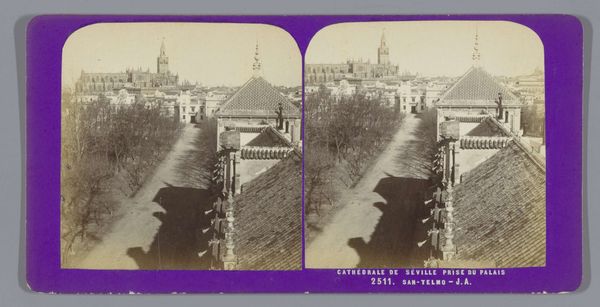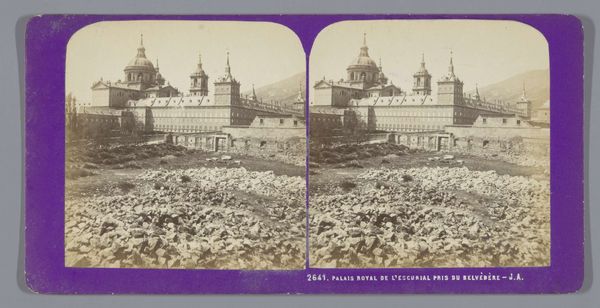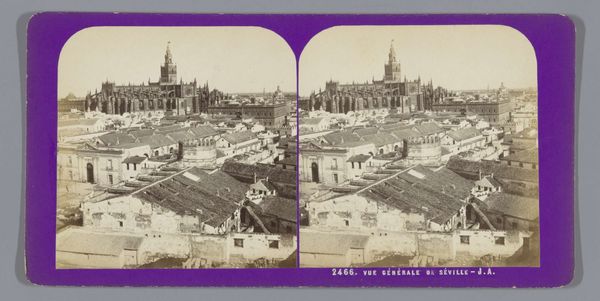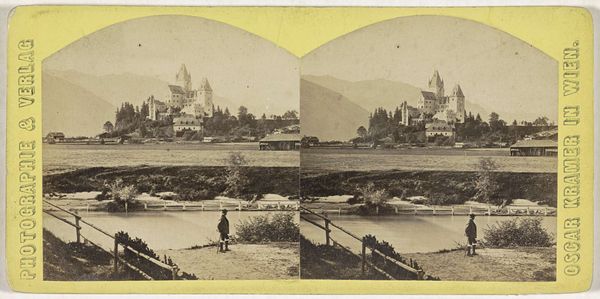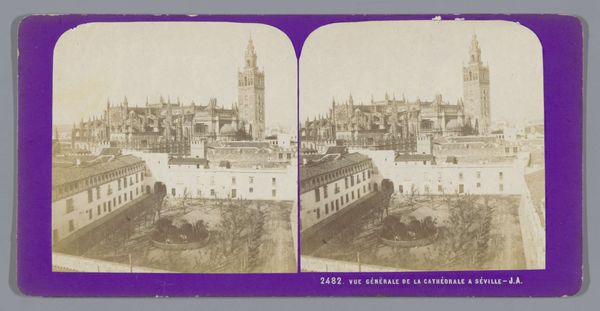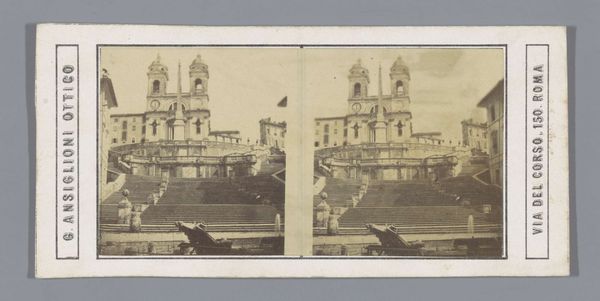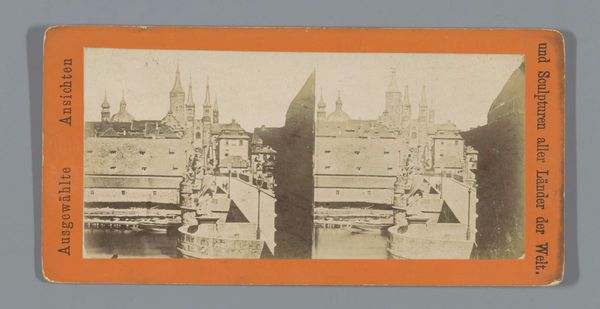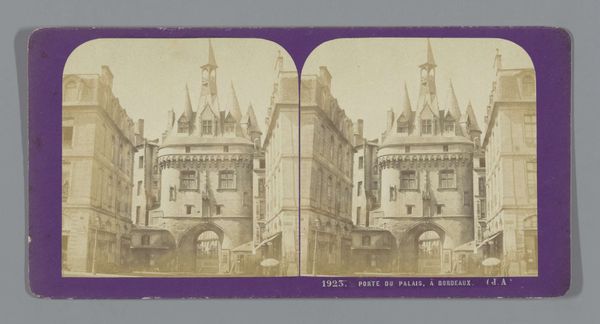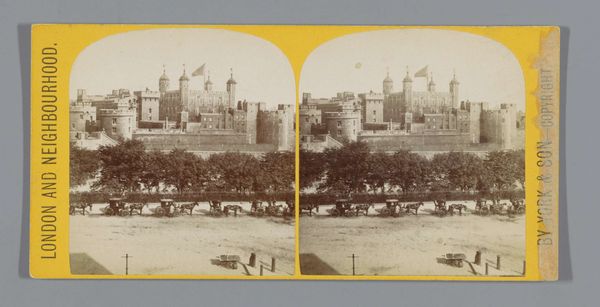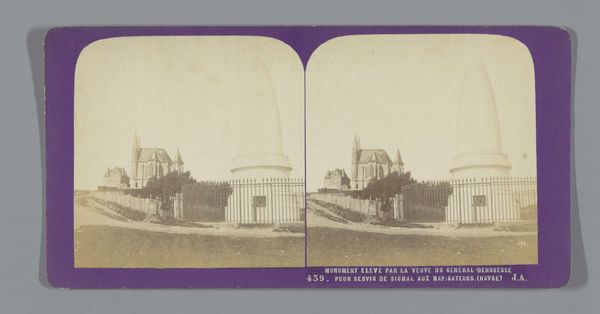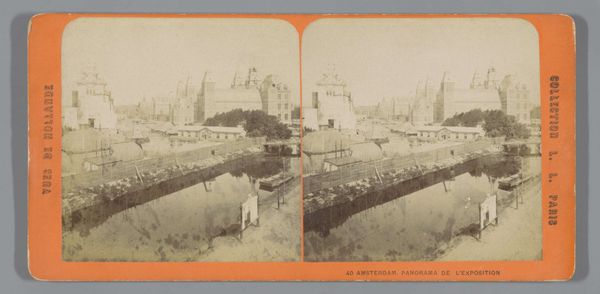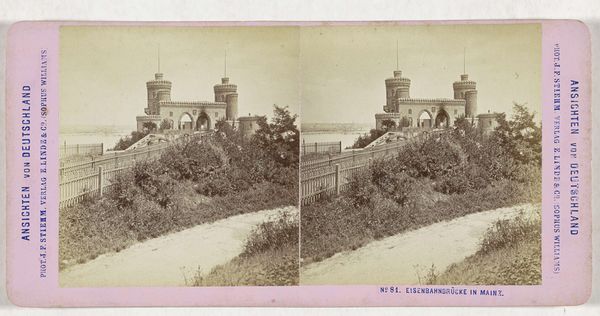
photography
#
landscape
#
photography
#
building
Dimensions: height 85 mm, width 170 mm
Copyright: Rijks Museum: Open Domain
Editor: So, this is "Gezicht op het Escorial," a stereoscopic photograph taken sometime between 1862 and 1876 by Jean Andrieu. Looking at the image, I’m really struck by how the immense structure seems to emerge right out of the landscape, blurring the line between architecture and the environment. What jumps out at you when you see this work? Curator: Immediately, I'm drawn to the production of this image and what it tells us about the distribution and consumption of visual information at the time. This isn't just a picture; it’s a mass-produced object designed for a specific mode of viewing – stereoscopy. The labour involved in capturing, printing, and distributing these photographs underscores the evolving relationship between art, industry, and leisure in the 19th century. How does the stereoscopic format impact your understanding of its cultural purpose? Editor: I guess it speaks to a desire for a more immersive, 'real' experience of seeing distant places without having to actually travel there. A commodified version of reality. Curator: Precisely. The materials – the photographic emulsion, the card stock – they all point to a deliberate effort to standardize and commercialize vision. We should also consider the social context: Who was buying these images? What did it mean to own a piece of the Escorial, even in photographic form? Editor: That's a great point. I hadn't thought about the consumption aspect that deeply. Was the rise of photography affecting traditional artistic practice? Curator: Absolutely. Artists were grappling with photography's mechanical reproduction. Understanding this historical shift in material production really informs how we see painting, sculpture, and photography differently in the context of cultural and industrial development. How has analysing materials informed your understanding of other artworks in the past? Editor: Thinking about it, knowing that artists were often experimenting with newly available pigments, for example, gives their color choices a whole new dimension. This conversation has changed my perception of the piece entirely; it's not just about the landscape, but about how that landscape was made, marketed, and consumed.
Comments
No comments
Be the first to comment and join the conversation on the ultimate creative platform.

